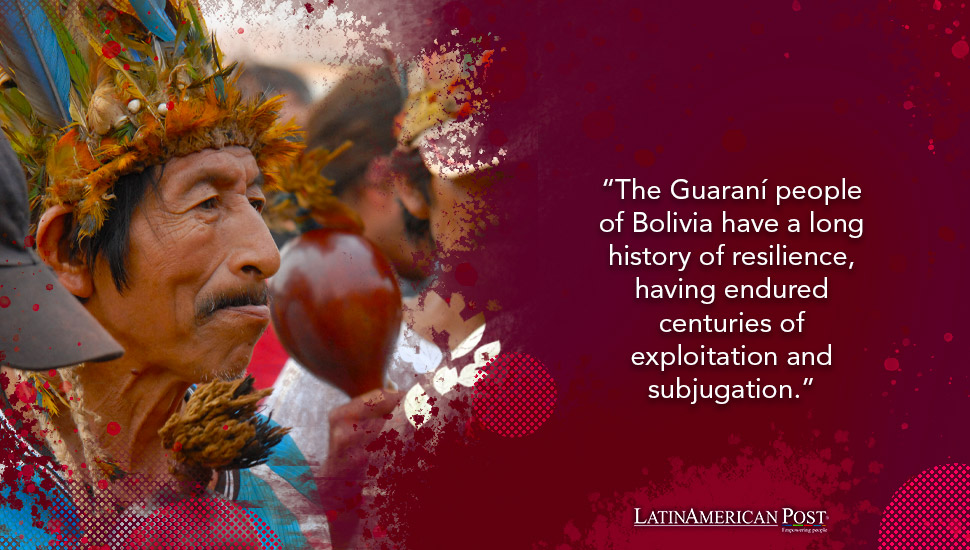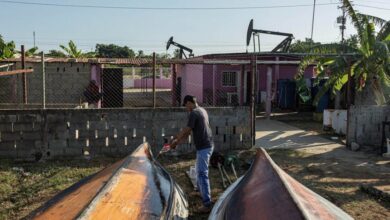Bolivian Guaraníes Preserve Tradition and Thrive Economically

In the remote forests of Bolivia’s Chaco region, the Guaraní people are crafting a new future with their ancestral skills, from palm weaving to woodworking, to create economic opportunities and sustain their newfound freedom; these initiatives preserve traditions and empower once-oppressed communities.
The Guaraní people of Bolivia have a long history of resilience, having endured centuries of exploitation and subjugation. Stripped of their lands and forced into servitude under colonial and post-colonial landowners, the Guaraní communities lived under harsh conditions, deprived of their fundamental rights and freedoms. It wasn’t until the early 21st century that they began to reclaim their autonomy and land, gradually forming communities in Bolivia’s Chaco region, which spans the departments of Santa Cruz, Chuquisaca, and Tarija.
For the Guaraní, this liberation was not merely about reclaiming territory—it was about reclaiming their identity, culture, and way of life. The concept of ‘iyambae,’ meaning “free and without owners” in Guaraní, became the guiding principle for these communities. Mario Rivera, an artisan from the Guaraní community of Cañadillas in Chuquisaca, reflects on this transformation: “We came from a time when we had no rights. Only when we returned to our land did we understand our rights and the importance of managing our natural resources?”
Today, the Guaraní people channel their resilience into various economic initiatives that sustain their communities and preserve their cultural heritage. These initiatives, deeply rooted in their ancestral knowledge, are helping the Guaraní to maintain their ‘iyambae’—their freedom—while building a sustainable future.
Crafting a Sustainable Economy
One critical economic activity the Guaraní communities have embraced is woodworking, using timber from fallen trees in the Chaco forest. This practice aligns with their deep respect for nature, as they avoid cutting down living trees and instead utilize wood from those that have naturally fallen due to storms or age.
Abelardo Yare, a skilled artisan who has been working with wood for 15 years, describes how this practice contributes to the community’s well-being: “We use this wood so that it doesn’t go to waste. Sometimes, if we leave it, the wood rots. Using it ensures we can put food on the table for our families.”
In the hands of these artisans, timber from trees like cedar is transformed into various products, from practical items like chairs and tables to intricate pieces such as animal-shaped keychains. This work provides a source of income and keeps the traditional craftsmanship alive, passing it down to younger generations who are learning the trade from their elders.
Celso Segundo, a ‘mburuvicha’ (community leader) from Tentami in the Chuquisaca department, learned the craft from his father and continues to work within the community to support economic revival efforts. “We always work within the community to support family economies,” Segundo explains. “We don’t cut down trees; we only use what nature has already provided.”
Empowering Women Through Ancestral Weaving
While the men focus on woodworking, the women of the Guaraní communities have revived and modernized the ancient art of textile weaving, which has become a significant source of income. In Tentami, around 20 women, led by a community leader and president of the Organization of Women of the Guaraní People, Santa Carvajal, are weaving textiles that reflect their cultural identity.
“Our goal is to improve our crafts and weavings, increase our income, and eventually create a microenterprise,” says Carvajal. The women use wooden looms to weave ‘bocos’—traditional Guaraní bags—and backpacks, belts, and other textiles. These products are practical and carry the rich cultural symbols and patterns of the Guaraní people.
Beyond weaving, these women diversify their economic activities by producing honey and related products such as shampoo and soap and brewing chicha, a traditional corn-based drink. All these products use eco-friendly methods, emphasizing their commitment to sustainability and respect for nature.
In the nearby community of Karatindi, women also engage in craftwork, but their focus is on weaving with palm leaves from the Karanda species, which grows in the Chaco forest. These palm leaves are transformed into baskets of various sizes and shapes, jewelry boxes, and decorative items, showcasing the creativity and skill of the Guaraní women.
Cleofe Lozano, a ‘mburuvicha’ from Karatindi, highlights the importance of these activities: “What we do is based on our ancestral practices.” By integrating these traditional crafts into modern economic activities, the women are preserving their cultural heritage, providing for their families, and ensuring the survival of their communities.
Support and Sustainability
These community-driven initiatives are supported by the Global Environment Facility (GEF) Chaco project, officially known as the “Strengthening the Integral and Sustainable Management of Biodiversity and Forests by Indigenous Peoples and Local Communities in Fragile Ecosystems of the Dry Chaco of Bolivia.” This project, funded by the GEF and executed by Bolivia’s Ministry of Environment and Water in partnership with the Food and Agriculture Organization (FAO) of the United Nations, aims to empower indigenous communities while promoting the sustainable use of natural resources.
The GEF Chaco project provides essential tools and resources to artisans. It helps women weavers by supporting the cultivation of cotton, ensuring that they have a reliable source of raw materials for their textiles. This support is crucial in helping the communities achieve economic independence and continue advancing their skills and craftsmanship.
Carvajal expresses her gratitude for the project’s support, noting that it has been instrumental in helping the communities achieve “economic independence” and enabling them to “continue moving forward.” By providing these resources, the project allows the Guaraní to maintain their ‘iyambae’—their autonomy—and strengthens their ability to thrive in a rapidly changing world.
Preserving Cultural Heritage and the Future
The Guaraní people have come a long way from the days when they were subjugated and deprived of their rights. Today, they are building a future that honors their past while embracing new opportunities through their dedication to preserving their cultural heritage and utilizing their natural resources sustainably.
These economic initiatives—woodworking, textile weaving, honey production, and more—are not just means of survival but expressions of the Guaraní identity and their connection to the land. As they continue to develop these crafts and share them with the broader world, the Guaraní demonstrate the value of their cultural traditions and their resilience in the face of adversity.
The future of these communities looks promising, thanks to their rich cultural heritage, commitment to sustainability, and the support they receive from projects like GEF Chaco. As they continue to grow and evolve, the Guaraní people are setting an example for other indigenous communities in Latin America and beyond.
Their story is a powerful reminder of the importance of cultural preservation, economic independence, and sustainable practices. By watching these communities thrive, we can learn valuable lessons about the strength of the human spirit and the possibilities that arise when people are empowered to shape their destinies.
Also read: Bolivia’s Major Gas Discovery Sparks Hope Amid Energy Crisis
The Guaraní’s journey from subjugation to self-determination is a testament to their resilience and creativity. As they continue to navigate the challenges of modern life, they do so with the knowledge that they are ‘iyambae’—free and without owners—and with a renewed sense of pride in their identity and culture.




